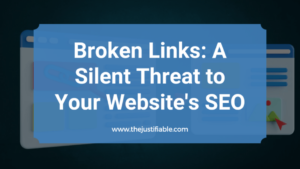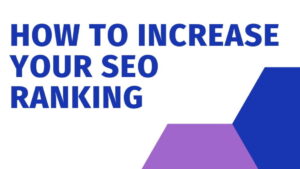Table of Contents
Have you ever wondered how content marketing helps SEO and why it’s essential for improving your online visibility?
In this article, we’ll dive into 10 data-backed insights that showcase the undeniable connection between effective content marketing and SEO success. By the end of this guide, you’ll understand actionable strategies to optimize your content and boost your search rankings while driving more traffic to your site.
1. Enhances Organic Search Rankings with High-Quality Content
High-quality content is the cornerstone of any effective SEO strategy. When your content is engaging, informative, and optimized for user intent, search engines rank it higher, driving organic traffic to your site. Let’s explore why this happens and how to leverage it.
Why Search Engines Reward High-Quality Content
Search engines prioritize content that satisfies user intent. They assess this by analyzing engagement metrics like time spent on the page, bounce rates, and click-through rates (CTR). High-quality content, rich with valuable information, keeps users engaged and signals search engines that the content is worth promoting.
For example, a detailed blog post on “how content marketing helps SEO” with actionable tips and examples will perform better than a shallow, keyword-stuffed article. Search engines reward effort because it improves the user experience. I suggest focusing on addressing common questions your audience has while maintaining a natural flow of information.
The Role of Targeted Keywords in SEO Success
Keywords act as a bridge between what users search for and what your content provides. Strategic keyword placement helps search engines understand the context of your content and match it with user queries.
For instance, integrating keywords like “how content marketing helps SEO” in headings, subheadings, and naturally within the text increases your chances of ranking for this term. However, keyword stuffing can lead to penalties. Use tools like Rank Math to ensure proper density (1–2%) without overloading your content.
Pro Tip: Perform keyword research using tools like Semrush or Ahrefs to identify long-tail keywords and questions your audience searches for.
How to Create Search-Optimized Content That Ranks
Creating search-optimized content requires balancing technical SEO and user value. Here are actionable tips:
- Use headings and subheadings with focus keywords for better organization.
- Write concise, informative introductions that hook readers immediately.
- Include multimedia (images, videos) to improve engagement and dwell time.
- End with actionable takeaways to encourage user interaction (e.g., sharing or commenting).
Example: If your topic is “how content marketing helps SEO,” create a clear structure where each section answers specific questions, making it easier for readers to find value quickly.
2. Boosts Backlink Opportunities Through Valuable Content

Backlinks remain one of the most influential ranking factors in SEO. By creating valuable content, you naturally attract links from other websites, boosting your authority and rankings. Here’s how to make it happen.
How Valuable Content Attracts High-Authority Links
Content that’s well-researched, unique, and insightful attracts backlinks from authoritative sources. People link to content that adds value to their audience or supports their arguments. Think of in-depth guides, comprehensive studies, or original infographics.
For example, if you create a data-backed article on “how content marketing helps SEO,” marketers and bloggers may cite your article when explaining the topic. This amplifies your reach while improving your domain authority.
Examples of Content Types That Generate Backlinks
Certain content formats are more effective in earning backlinks:
- Original Research: Studies or surveys with unique data.
- How-To Guides: Step-by-step instructions that simplify complex topics.
- Infographics: Visual data representations that are easy to share.
- Case Studies: Real-world examples with actionable insights.
For instance, if you publish a case study showing how content marketing improved a site’s SEO performance by 150%, others in your niche are likely to reference it.
Data-Proven Benefits of Backlinking for SEO
Backlinks signal trust and credibility to search engines. According to a study by Ahrefs, 91% of content gets no organic traffic due to a lack of backlinks. Sites with a robust backlink profile often dominate competitive keywords.
For example, high-authority domains like Forbes or HubSpot rank consistently because they attract quality backlinks to their in-depth articles. You can replicate this success by reaching out to niche influencers or using guest blogging to build relationships.
3. Improves Website Traffic Through Content Relevance
Creating relevant content is one of the most effective ways to drive consistent website traffic. When your content aligns with what your audience is searching for, it builds engagement, trust, and repeat visits.
Why Relevant Content Keeps Readers Engaged
Relevant content addresses the specific needs, challenges, and interests of your audience. When readers find exactly what they’re looking for, they’re more likely to stay on your site, explore other pages, and engage further.
For example, if someone searches for “how content marketing helps SEO” and finds a detailed guide answering their questions with actionable steps, they’re likely to spend more time reading it. I suggest creating content that answers common queries or solves specific problems to keep your audience engaged.
Takeaway: Write content that directly addresses your target audience’s pain points and provides clear, actionable solutions.
The Connection Between User Intent and Content Success
User intent is the driving force behind every search query. Search engines prioritize content that matches the intent behind the keywords. This means understanding whether users are looking for information, making a purchase, or seeking a quick solution.
For instance, someone searching for “how content marketing helps SEO” likely wants a clear explanation, practical examples, and data to support claims. If your content addresses this intent, it’s more likely to rank higher and attract organic traffic. I recommend analyzing search intent before creating any piece of content.
How to Optimize Content for Long-Tail Keywords
Long-tail keywords are highly specific phrases that target niche audiences. They’re easier to rank for and often bring in more qualified traffic. Optimizing content for these keywords involves researching phrases that resonate with your audience and incorporating them naturally throughout the text.
For example, instead of targeting “SEO,” focus on a more specific keyword like “how content marketing helps SEO for small businesses.” Use tools like Ahrefs or Google Keyword Planner to identify these phrases and include them in your headings, meta descriptions, and body text.
4. Increases Dwell Time and Reduces Bounce Rates

Dwell time and bounce rate are critical SEO metrics that signal the quality of your content to search engines. Engaging, well-structured content keeps readers on your site longer and encourages them to explore further.
How Engaging Content Keeps Visitors on Your Site Longer
Engaging content grabs attention immediately and holds it throughout the page. This can be achieved through captivating introductions, clear headings, and a mix of text, visuals, and multimedia.
For example, an article on “how content marketing helps SEO” could include infographics, video tutorials, and case studies to make the content dynamic and interactive. I recommend using storytelling or examples to make your content more relatable and memorable.
Why Dwell Time Is a Crucial SEO Metric
Dwell time refers to the amount of time a user spends on your site before returning to the search results. Longer dwell times indicate that users find your content valuable, signaling search engines to rank your page higher.
For instance, if readers spend 3-5 minutes reading your article on “how content marketing helps SEO,” search engines see this as a positive signal of relevance and quality. I suggest structuring your content with scannable sections, bullet points, and clear takeaways to keep readers engaged.
Tips to Reduce Bounce Rates with Better Content
Reducing bounce rates starts with understanding why users leave in the first place. Common reasons include irrelevant content, poor formatting, or slow loading times. Here’s how to improve:
- Create Value from the Start: Hook readers with a compelling introduction.
- Use Clear Navigation: Make it easy for users to find related content.
- Optimize for Mobile: Ensure your site is responsive and fast.
For example, a blog about “how content marketing helps SEO” should include internal links to related topics, like “The Role of Backlinks in SEO,” to keep readers exploring your site.
Takeaway: Reducing bounce rates requires addressing user needs upfront and making it easy for them to find additional value on your site.
5. Supports Internal Linking for Better Indexing
Internal linking is an essential aspect of SEO that improves website navigation and helps search engines understand the structure of your site. A strategic internal linking strategy not only boosts user experience but also enhances the visibility of your content in search engine results.
How Internal Links Improve Website Navigation
Internal links guide visitors to related content on your website, making it easier for them to explore and find value. They act as pathways that connect various pages, improving the overall user experience and encouraging visitors to spend more time on your site.
For instance, if your article discusses “how content marketing helps SEO,” linking to a related post about “effective keyword research strategies” ensures the reader finds additional, relevant insights. This keeps them engaged while reducing bounce rates. I suggest reviewing your site structure and ensuring every page has at least 2-3 relevant internal links.
Best Practices for Creating a Strong Internal Linking Strategy
A strong internal linking strategy requires intentional planning. Here’s how to do it effectively:
- Link to Relevant Pages: Only link to pages that add context or value to the current content.
- Use Descriptive Anchor Text: Ensure the anchor text reflects the page’s topic to provide clarity.
- Avoid Excessive Links: Don’t overwhelm readers with too many links; focus on quality, not quantity.
For example, linking to “how content marketing helps SEO” in a post about “SEO for beginners” provides logical continuity, whereas linking it in a post about “web hosting” might feel out of place.
The SEO Benefits of Optimizing Anchor Text
Anchor text—the clickable text in a hyperlink—is a crucial element for SEO. When optimized, it provides context for both users and search engines about the linked page.
For example, using “learn how content marketing helps SEO” as anchor text is more descriptive than just “click here.” Search engines use anchor text to understand the relevance of the linked page, which impacts rankings. I recommend using natural, keyword-rich phrases while ensuring they blend seamlessly into the content.
6. Builds Brand Authority with Consistent Content

Consistent, high-quality content helps establish your brand as an authority in your niche. When you consistently deliver valuable insights, your audience begins to trust your expertise, which directly impacts SEO performance.
How Authoritative Content Positions Your Brand as a Leader
Authoritative content answers complex questions, provides in-depth analysis, and showcases your expertise. When readers consistently find valuable information on your site, they view your brand as a reliable source.
For example, a blog focused on “how content marketing helps SEO” that includes data, expert quotes, and actionable tips will outperform generic content on the same topic. I suggest regularly updating older posts with new insights to maintain relevance and authority.
Why Trust Signals Improve Your SEO Performance
Trust signals—like expert authorship, citations, and testimonials—play a crucial role in SEO. Search engines favor sites that appear credible and trustworthy, as users are more likely to engage with such content.
For instance, linking to credible sources or including case studies in your post about “how content marketing helps SEO” boosts its trustworthiness. I recommend using authoritative data and ensuring transparency to strengthen your content’s reliability.
The Long-Term Impact of Brand Authority on SEO
Over time, consistent content production builds a strong foundation of brand authority that pays off in SEO. Search engines begin to recognize your site as a reliable source, improving its rankings for competitive keywords.
For example, if your site regularly publishes high-value content on SEO topics, like “how content marketing helps SEO,” you’ll naturally attract backlinks, higher traffic, and better rankings. This creates a compounding effect, where your authority drives further success.
7. Targets Featured Snippets with Well-Structured Content
Featured snippets are highly visible search results that provide users with quick answers directly on the search engine results page (SERP). Structuring your content effectively can help you secure these spots, increasing your visibility and driving organic traffic.
What Are Featured Snippets, and Why Do They Matter?
Featured snippets are short excerpts pulled from a webpage and displayed at the top of Google’s search results. These snippets often answer specific questions or provide concise information, making them valuable for capturing user attention.
For example, if someone searches “how content marketing helps SEO,” a featured snippet might showcase a short list explaining the relationship between content marketing and SEO. Featured snippets improve click-through rates (CTR) because users see your content first, even above the top-ranking website. I recommend focusing on answering specific questions clearly and concisely within your content to improve your chances of earning snippets.
How to Structure Content to Earn Snippets
To target featured snippets, your content needs to be well-organized and optimized for user intent. Here’s how to structure it effectively:
- Use Clear Headings: Break down content with H2 and H3 tags that match common search queries.
- Answer Questions Directly: Start with a concise answer, then provide more detail if necessary.
- Use Lists and Tables: Google often pulls lists, tables, and bullet points for snippets.
For instance, in an article about “how content marketing helps SEO,” include a bulleted list under a heading like “5 Ways Content Marketing Boosts SEO.” This format increases the likelihood of being selected as a snippet.
Takeaway: Structuring your content around specific user queries and using lists or tables makes it snippet-friendly.
Examples of Snippet-Optimized Content
Some examples of content formats that work well for snippets include:
- Definitions: Clearly define key terms or concepts (e.g., “Content marketing is a strategy that uses valuable content to attract and retain an audience.”).
- Lists: Provide step-by-step instructions or benefits in a list format.
- FAQs: Address frequently asked questions directly within your content.
For example, creating a section titled “What Is the Role of Content Marketing in SEO?” with a concise answer can position your content for a snippet. I suggest analyzing current featured snippets in your niche and mimicking their format.
8. Generates Social Shares and Indirect SEO Signals

Content marketing doesn’t just impact SEO directly; it also generates social shares, which act as indirect signals to boost your search rankings. Social media engagement amplifies your content’s reach, driving traffic and increasing visibility.
Why Social Media Shares Are Important for SEO
While social shares aren’t a direct ranking factor, they contribute to SEO indirectly. The more your content is shared, the higher the chances of attracting backlinks, traffic, and engagement, all of which are essential SEO metrics.
For example, if your article about “how content marketing helps SEO” is widely shared on LinkedIn or Twitter, it increases its reach, bringing in more potential backlinks and readers. I believe integrating social sharing buttons into your site and encouraging users to share your content is a simple but effective strategy.
How Content Marketing Amplifies Social Media Engagement
High-quality, engaging content is the backbone of social media success. Content that resonates with your audience is more likely to be shared, liked, and commented on, creating a ripple effect that drives traffic to your site.
For example, creating an infographic summarizing “how content marketing helps SEO” can make your content more shareable and visually appealing on platforms like Instagram or Pinterest. I recommend repurposing your blog content into formats that perform well on social media, such as videos or short posts.
Creating Share-Worthy Content for SEO Benefits
To make your content share-worthy, focus on these key elements:
- Emotionally Engaging: Content that evokes emotion—whether it’s inspiration, curiosity, or humor—tends to be shared more.
- Visually Appealing: Use images, infographics, or videos to make your content stand out.
- Actionable Insights: Provide tips, checklists, or advice that readers can easily apply.
For instance, an infographic titled “5 Data-Backed Insights on How Content Marketing Helps SEO” would likely attract more shares than a plain text article. I suggest including a clear call-to-action encouraging readers to share your content with their networks.
Takeaway: Shareable content drives engagement and traffic, which indirectly boosts your SEO efforts.
9. Optimizes Multimedia Content for Improved SEO
Multimedia content—such as visuals, videos, and infographics—plays a significant role in improving SEO. By creating engaging and optimized multimedia, you can enhance user experience, boost engagement, and improve your search rankings.
The Role of Visuals and Videos in Content Marketing
Visuals and videos make your content more engaging and digestible. They help break up long blocks of text, making your content more reader-friendly and appealing to diverse audiences. Search engines also prioritize content with rich media because it often leads to better user engagement metrics.
For example, including a video tutorial on “how content marketing helps SEO” can help viewers grasp the concept quickly, increasing dwell time and reducing bounce rates. I recommend using visuals like charts, infographics, and screenshots to support key points and make your content stand out.
How to Optimize Images and Videos for SEO
Optimizing multimedia content ensures it contributes positively to your SEO strategy. Here are key steps:
- Use Descriptive File Names: Name your files with relevant keywords, such as “how-content-marketing-helps-SEO.jpg.”
- Compress Media: Reduce file sizes to improve page load times without sacrificing quality.
- Add Alt Text: Include keyword-rich alt text that describes the image for accessibility and SEO.
For example, if you’re writing about “how content marketing helps SEO,” use alt text like “Infographic showing how content marketing improves SEO rankings.” I suggest hosting videos on platforms like YouTube and embedding them on your site to drive traffic from multiple channels.
Why Multimedia Content Boosts Engagement Metrics
Multimedia content grabs attention and keeps users engaged, which directly impacts SEO metrics like dwell time and CTR. It also encourages social sharing, further amplifying your content’s reach.
For instance, a well-designed infographic about “10 Ways Content Marketing Helps SEO” can be shared across social media platforms, driving traffic back to your site. I believe creating a mix of visual and textual content is the best way to cater to different learning preferences.
Takeaway: Multimedia content improves engagement and indirectly boosts your SEO by keeping users on your site longer.
10. Provides Insights for SEO with Data-Driven Analytics
Analytics provide invaluable insights into your content’s performance, allowing you to refine your strategy and maximize SEO results. By understanding how your content is performing, you can make data-backed decisions to continuously improve.
How Content Metrics Inform SEO Strategies
Content metrics like bounce rate, time on page, and click-through rate (CTR) help identify what’s working and what isn’t. These insights allow you to adjust your content to meet user needs better.
For example, if a post on “how content marketing helps SEO” has a high bounce rate, it might indicate that readers aren’t finding what they’re looking for. I suggest analyzing these metrics regularly to identify areas for improvement, such as updating content or refining headlines.
Tracking Performance with Tools Like Google Analytics
Tools like Google Analytics help you monitor key performance indicators (KPIs) that influence SEO. These include organic traffic, referral traffic, and user behavior metrics.
For instance, you can use Analytics to see which pages drive the most traffic for “how content marketing helps SEO” and focus on replicating their success. I recommend setting up conversion goals to track how your content contributes to business objectives, such as leads or sales.
Takeaway: Leverage analytics tools to track and optimize your content’s performance effectively.
Using Data Insights to Continuously Improve Content
Regularly reviewing data insights helps you stay ahead in your content marketing strategy. Use these insights to identify content gaps, update outdated posts, and create new pieces that align with user intent.
For example, if data shows users frequently search for “examples of how content marketing helps SEO,” you can create a detailed guide addressing this topic. I suggest creating a content calendar based on analytics to prioritize high-impact topics.
Takeaway: Continuous improvement through data-driven insights ensures your content remains relevant, engaging, and optimized for SEO.






